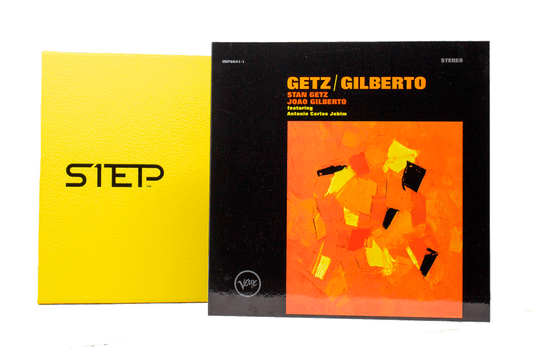Singer Annie Lennox and guitarist David A. Stewart began working together as members of a London-based punk band called The Catch (later The Tourists), which split in 1980. Soon thereafter, Lennox and Stewart signed with RCA and recorded an album under the name Eurythmics. Almost nobody noticed.
Two years later, they were rock stars.
So, the obvious starting point for an overview beyond the hits is to look at Eurythmics’ debut album, In the Garden (1981), from before they were famous. The title is deceptive – if you’re expecting twee folk music, you’re in for a surprise. What you get instead is a couple of energetic youngsters experimenting with psychedelic sounds.
The session musicians included two members of the experimental German rock group Can, not to mention the son of avant-garde composer Karlheinz Stockhausen on brass instruments. Stewart’s interest in combining electronica with acoustic sounds is evident in the mesmerizing “All the Young (People of Today),” which also gives a glimpse of the charismatic power of Lennox’s voice.
Eurythmics’ emergence was perfectly timed for RCA to take advantage of the staggering growth of “new wave” music, a synth-based pop outgrowth of first-generation punk. By their second album, Sweet Dreams (Are Made of This) (1983), the duo found itself labeled as this genre. The second record focuses much more on electronica, doing so in a way that captivated the market. The title track was a bit hit single.
Lennox and Stewart were also honing their songwriting skills; all but one track on the original album was their own compositions. Ironically, the other big hit was Isaac Hayes’ “Love Is a Stranger.” At the time they also recorded “Satellite of Love” by Lou Reed, but it was not released until a special edition of the album in 2005. The theremin-like synth lines and Lennox’s confident delivery make for a stunning contrast with Reed’s simple and hesitant original.
The source of one of their biggest hits, “Here Comes the Rain Again,” the album Touch (1983) was Eurythmics’ first record to hit number one in Britain, and it made the top ten in the U.S. The track “Aqua” is an intriguing mix of timbres, blending electronics and acoustics on an album prized for its usefulness as club dance music (and one of the first albums to be quickly rereleased in an extended dance-mix version).
Maybe the most important detail about “Aqua” is Lennox’s many layers of backing vocals in a style inspired by African women’s chanting. In the decades since this album, she has become one of the world leaders in outreach to AIDS-affected areas of Africa, and her interest in that continent is already apparent in 1984, even as AIDS is just being discovered.
An excellent opportunity fell into Stewart and Lennox’s lap when they were tapped to provide the soundtrack for the Michael Radford-directed film of Orwell’s dystopian novel, 1984. While the studio album version, For the Love of Big Brother (1984), showed disappointing sales, the project challenged the duo to use their love of electronica, African music, and R&B/funk to create programmatic soundscapes.
They used no session musicians, providing all the playing and sampling themselves. Lennox’s voice becomes a scat-like instrument, merely adding to the color palette in the atmospheric “Greetings from a Dead Man.”
There couldn’t be a greater contrast between that 1984 soundtrack experiment and the mainstream pop of Be Yourself Tonight (1985). That album has so many hits and so few secrets, that I’ll skip ahead to the following year’s Revenge.
“In This Town” is a studio recording that pretends to be live (the cheering and applauding has mysteriously disappeared by halfway through the track). The pop-rock sound, with standard drum-kit and bass patterns, had become the norm for Eurythmics at this point. Maybe the most surprising thing about this song is that the band Madness did not sue for the heavy “borrowing” (to put it nicely) in the chorus from their 1982 hit “Our House.”
Happily, the foray into pop ended with the 1987 album Savage. Here was the true Eurythmics back again, doing weird things with digitized sound and Lennox’s sandpaper-wrapped-in-velvet contralto pipes. Needless to say, Savage saw a marked drop in sales compared to the top-40 radio hit machine albums.
The title track, “Savage,” opens with atmospheric shades of Brian Eno. The sultry vocal line is low-key and meditative, keeping much of the spotlight on Stewart’s complex structure of sampled textures and timbres.
We Too Are One is the last of the Eurythmics studio albums until Peace ten years later. By 1989, fickle American taste had moved on, so We Too Are One was far more successful in the rest of the world. Longtime Eurythmics collaborator Chucho Marchán gets a co-songwriting credit for “You Hurt Me (And I Hate You).” What sounds like a cabaret turn for Lennox ramps up into a Latin jazz-infused rock number, colored by Marchán’s programming of flute and brass samples.
For ten years, Lennox and Stewart took a break from the relentless work of keeping a touring, recording duo up and running. In 1999, inspired by their growing mutual concern about world affairs, they made their final Eurythmics studio album, Peace.
The song “Peace Is Just a Word” employs synths in a new way for the band: the smooth, rich sonorities are meant to buoy Lennox’s soaring vocal line instead of challenging it with complex, busy rhythms and textures. One could argue the new style is too sentimental. Then again, aging has had that effect on many a songwriter (not to mention listener).


